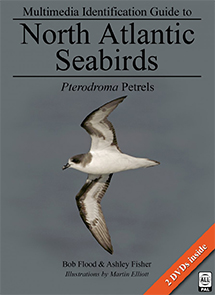Weekly birding round-up: 12 - 18 Oct 2016
Last week’s easterly flow continued until the night of 14th when an area of low pressure moved in from the west, throwing England into southerly and then southwesterly winds but with northeast Scotland and the Northern Isles remaining in strong southeasterlies. This ensured a continuation of last week’s flood of birds to the east coast, leaving the west somewhat bereft. There was no repeat of last week’s astonishing diversity of major rarities but this was nevertheless an exceptional birding week.
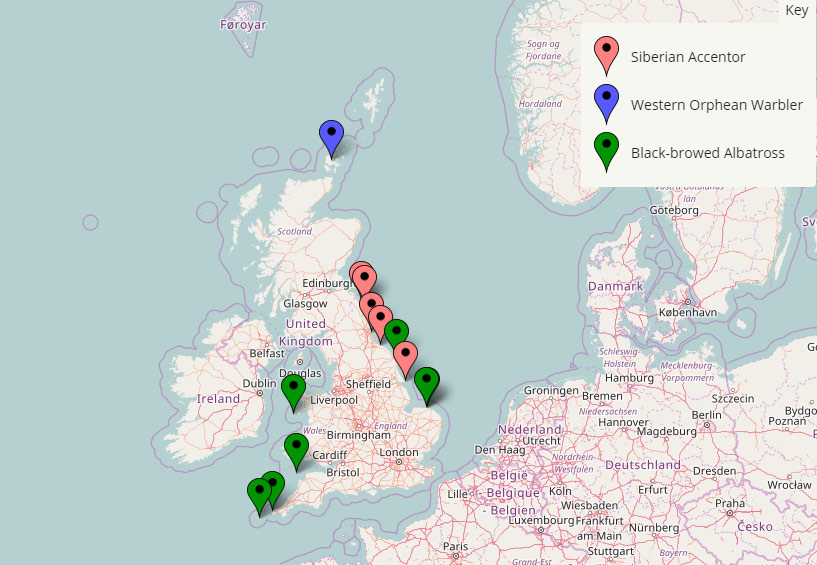
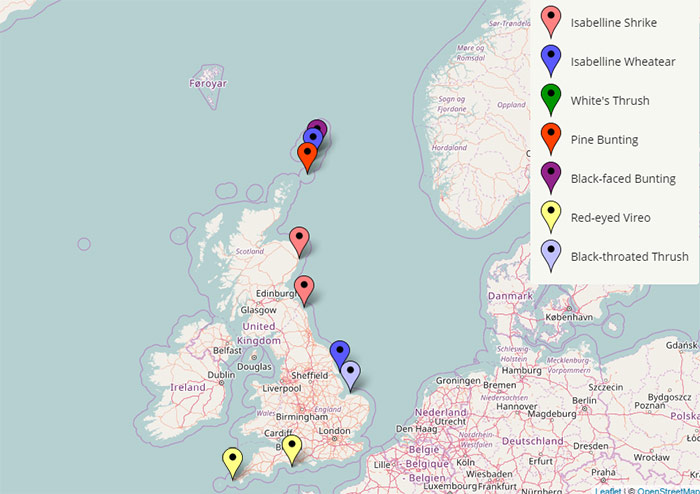
There is no doubt about the week’s headline story. Last week, Shetland’s Siberian Accentor represented the realisation of a dream for many, the culmination of decades of eager anticipation. Like all extreme vagrants, this would surely be a one-off, a once in a lifetime opportunity to enjoy an exceptional vagrant wouldn’t it? Given the scatter of records last week in southern Scandinavia, there were of course signs that, just perhaps, another of these gorgeous accentors might be on the way but this was as much wishful thinking as firm prediction. And if another one did come, surely it would be on Shetland again rather than the English east coast?
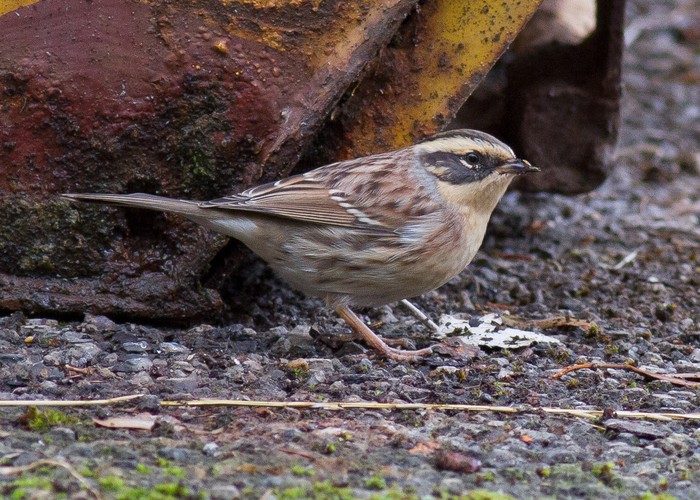
This narrative was trashed in spectacular fashion by the amazing discovery of Britain’s second Siberian Accentor at Easington, Yorkshire on the afternoon of 13th. Not only was this on the English east coast but it was also in an accessible location, remaining faithful to a favoured feeding spot and showing well and close. To the relief of many it was still present next morning and the year’s biggest twitch duly ensued, with the potential problem of large crowds in a residential area ably mitigated by staff and volunteers from nearby Spurn Bird Observatory. By all accounts all went well and, with a bit of patience, everyone secured excellent views of the bird. The bird itself appeared unconcerned by all the attention and did the decent thing by remaining over the Friday night and then remaining to 18th.
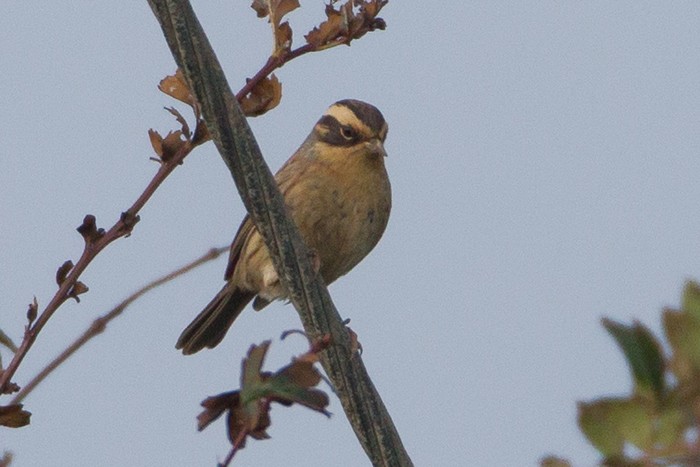
Nor was this the end of the story. No sooner had the shock of the Yorkshire bird sunk in than another was found, this one just to the north at Saltburn, Cleveland on 15th. It was much more elusive though, only being seen occasionally during the day, and there was no sign of it on 16th although it was reported again on 17th. And then came yet another, this one at Hendon South Dock, Sunderland, Durham on 16th. Here it remained all day and was still present on 18th. Remarkably, the week finished with yet another - now Britain’s fifth - on Holy Island, Northumberland on 18th, found early in the morning along the island’s northern shore.
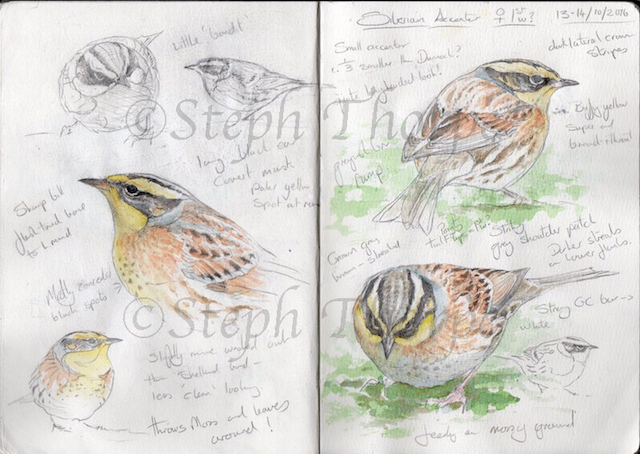
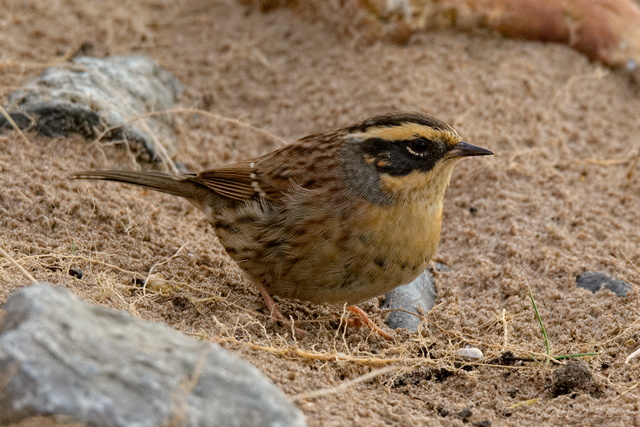
While all this was going on, Siberian Accentors were dominating the headlines across northwest Europe too. Last week’s influx brought seven to Sweden and Finland - a remarkable event in itself - but this was just the beginning. The whole of this week has seen multiple new discoveries every day and the endlessly updating totals are proving rather hard to keep up with. Nevertheless, Tarsiger.com has kindly added them up and the total comes to an astonishing 91! The country breakdown is as follows: Sweden 35, Finland 30, Britain 5, Denmark 5, Latvia 4, Germany, 4, Poland 3, Lithuania 2, Estonia 2 Norway 1.
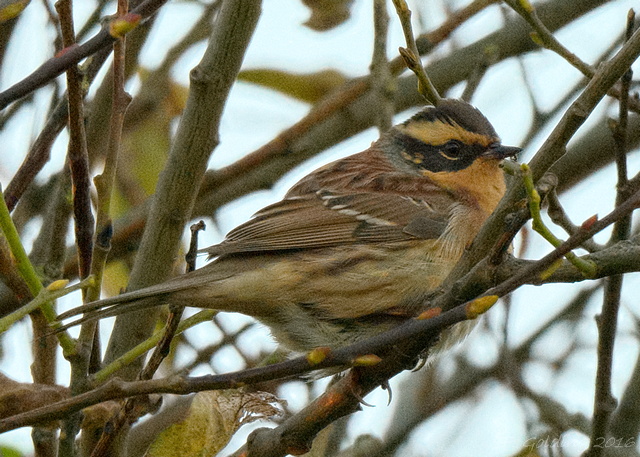
This is clearly an exceptional (and continuing) event, more akin perhaps to an irruption than a scatter of vagrants. Quite what explains it is hard to determine, however. Maybe Siberian Accentors have had an exceptional breeding season but it is hard to see food shortage as a reason for such a dramatic westward dispersal. A key factor must be the sustained long range easterly winds from the western edge of their range. These have been extraordinary both in their reach and their persistence. Whatever the reason, this is now clearly the defining avian event of 2016.
Looking ahead, there seems every chance now that Britain will improve on its current total of five. The momentum of the influx has not slowed yet, it is still only mid-October and there are more easterly winds on the way so the prospects for more look good, on paper at least. The distribution of the European records is interesting, with a great concentration around the Baltic but only one in western Norway, a traditionally rich vagrant hunting ground, and none further south. The relatively narrow trajectory of these birds and their (presumably) southwesterly track may well bring any future birds to the English east coast rather than the Northern Isles, and as time goes on it looks increasingly likely that East Anglia will finally get to join in the action. The chances of a winterer look good now too…..
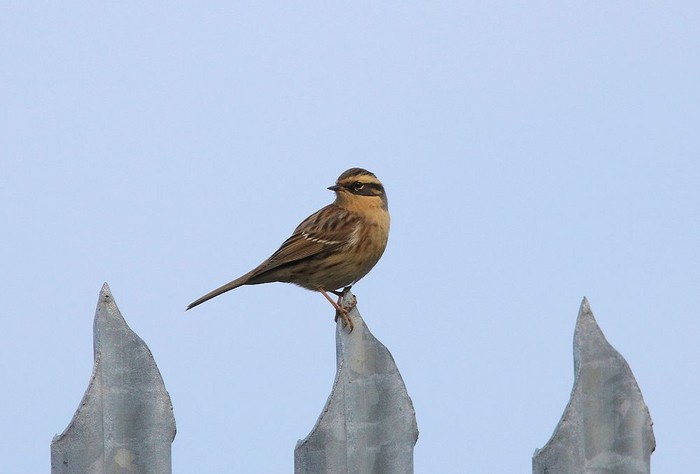
The next best passerine of the week also brought with it a sense of deja-vu. Following the Western Orphean Warbler on Shetland last week, another was trapped at Finstown, Mainland Orkney on the morning of 18th. There have now been five Western Orphean Warblers in Britain and four unassigned to species, so Eastern Orphean Warbler remains an unclaimed prize.
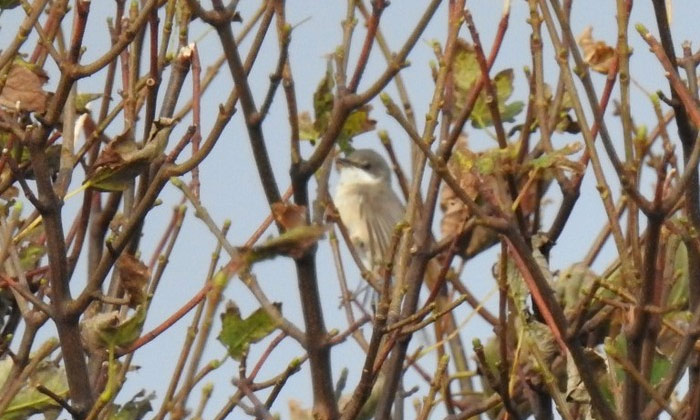
Turning abruptly away from passerines (but just for a moment), the rarest species of the week was Black-browed Albatross , with multiple reports from both east and west coasts. The first report came from Filey, Yorkshire where one flew north at 1210, followed by further reports off Cley/Salthouse, Norfolk on 14th at 1310 and again on 15th at 0935. The next sighting was on 16th when one rounded the southern tip of Bardsey, Gwynedd at 0940, passed southwest again mid-morning and was still present at 1205 but not thereafter. It or another was then reported off Morning Point, St. Mary’s, Isles of Scilly on the morning of 17th, heading away past Gugh and St. Agnes only to reverse its course and pass south off Cape Cornwall on the morning of 18th, on which date there was also a late report of it off Lundy, Devon on 17th! It is becoming increasingly hard to keep tabs on what is going on but assigning all these to one individual looks tricky indeed! Something for BBRC to sort out....
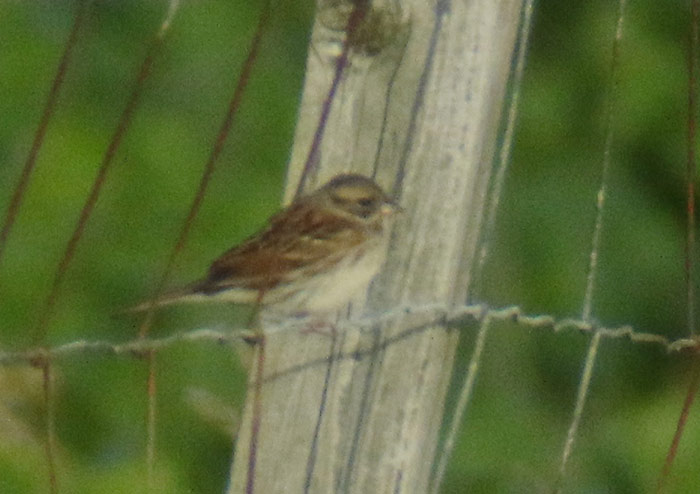
Back to eastern passerines, and the next rarest on the list was last week’s Black-faced Bunting still on Bressay, Shetland to 18th though, judging by the ‘record shot’ nature of the photographs, it remained flighty and elusive.
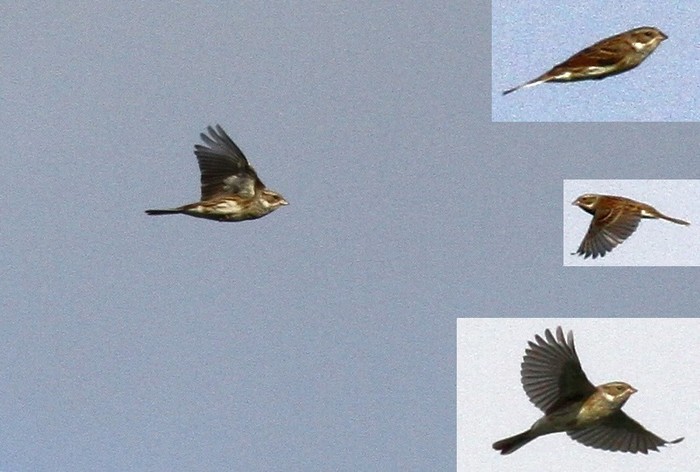
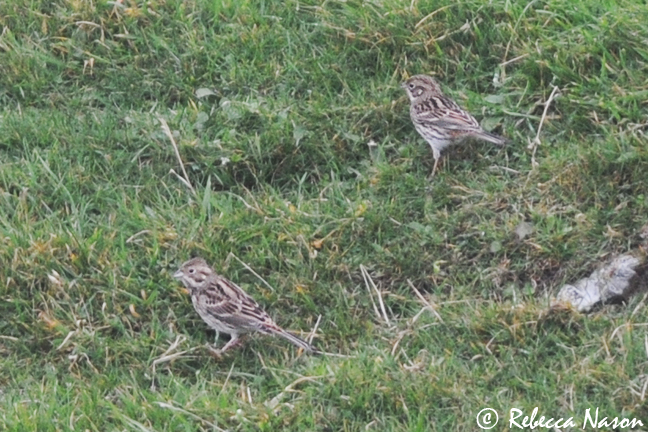
Also still present was last week’s Pine Bunting on Fair Isle, Shetland to at least 17th. By contrast, this looked as though it showed quite well, the online images providing a real identification lesson for the tricky females of this species. Another (also a female) was then found alongside the first bird on 16th and then on 17th an unprecedented third female was found there, a truly unique event in Britain. Two of the trio were still present on 18th.
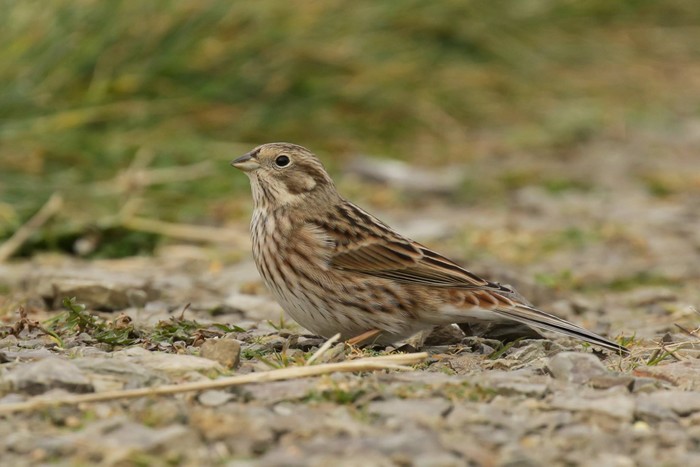
Also new on 17th was yet another White’s Thrush , the autumn’s sixth and, predictably, on Shetland again, this time flushed at Spiggie, Mainland.
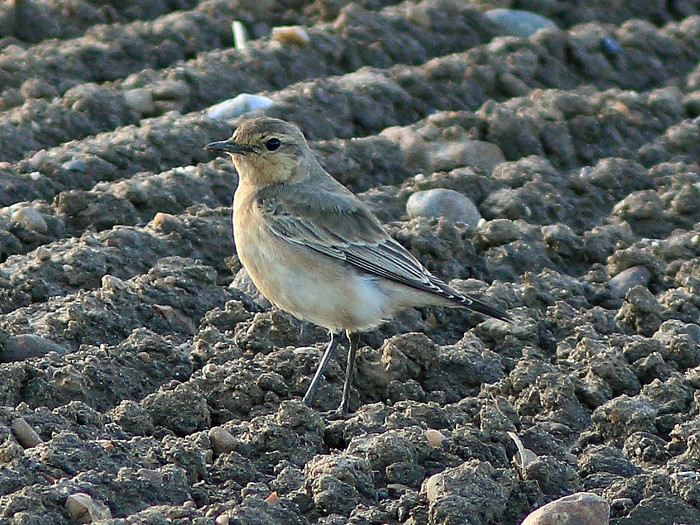
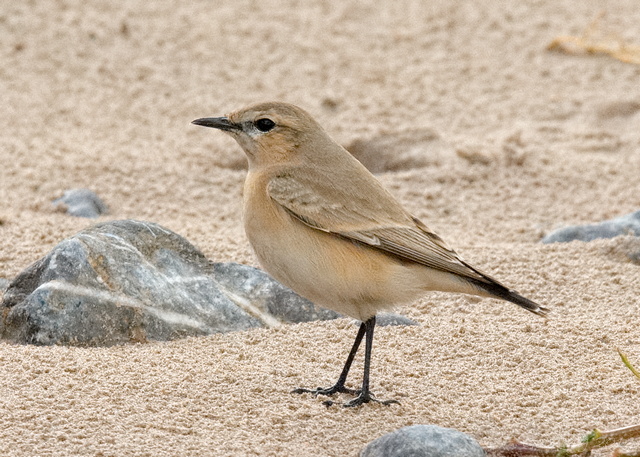
The White's Thrush was presumably discovered by someone on the trail of an Isabelline Wheatear found at Spiggie on 15th and still present on 18th whilst another Isabelline Wheatear was found at Easington, Yorkshire on 17th, just half a mile up the road from the Siberian Accentor. It was still there on 18th, on which date another Isabelline Wheatear was promptly found on Holy Island, not far from that Siberian Accentor! Such coincidences and remarkable conjunctions of birds are surely part of what makes October so special. The wheatear remains a perpetually rare bird in Britain with just one or two most years. The Shetland and Yorkshire birds represent the fifth records for their respective counties but the Holy Island bird is only the second for Northumberland.
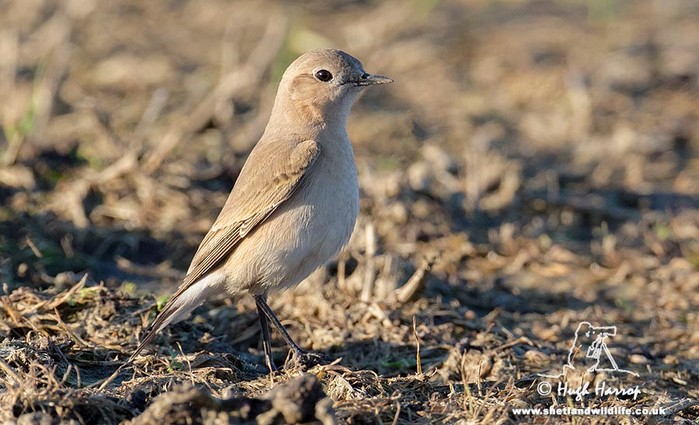
Isabelline Wheatear, Spiggie, Shetland from Shetland Wildlife.
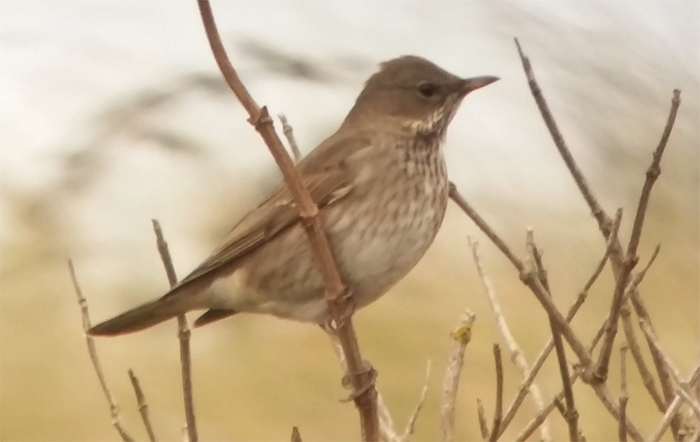
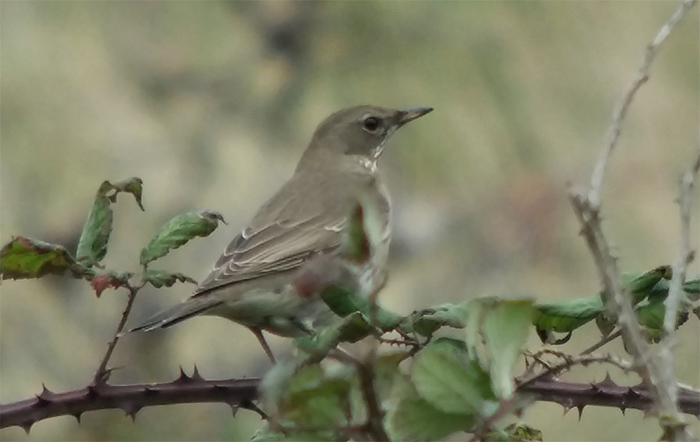
Further south, Norfolk’s best bird of the period was a first-winter female Black-throated Thrush on Scolt Head Island on 14th which, it later transpired, had also been present on 13th.
Two Isabelline Shrikes - a species previously missing from October’s rarity parade - were found on 18th, the first (an apparent ‘Daurian Shrike’) at Girdle Ness, Aberdeenshire and the second on Holy Island, Northumberland where it provided a pleasant diversion from the Siberian Accentor and added yet another great bird to this site’s best ever autumn for rare birds.
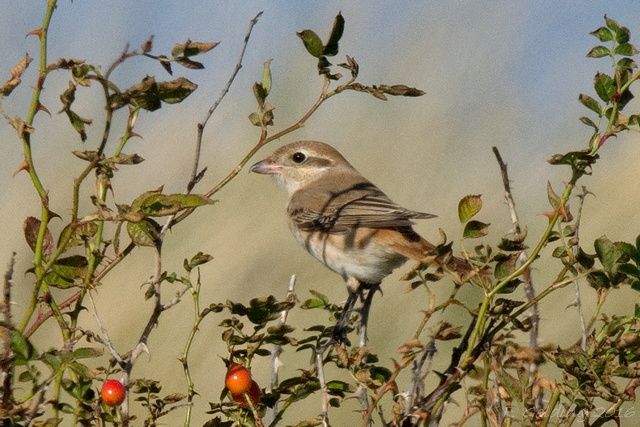
Despite the relentless easterly conditions, a couple of American passerines somehow got through - a Red-eyed Vireo at Portland, Dorset on 14th and then another at Porthgwarra, Cornwall on 15th and 16th. The former becomes the fourth for Dorset, in the wake of a previous bird at Portland in 1988 and others at Hengistbury Head in 1987 and Littlesea in 1995.

Unsurprisingly, Cornwall’s record is far better, with this bird becoming its twenty-ninth. This year has seen further evidence of an increasing north/south split in American landbirds in Britain. Red-eyed Vireos continue to turn up in the Southwest as they have always done (and they remain rare in the north) whilst the other traditional Southwest specialities such as the cuckoos and Catharus thrushes occur increasingly frequently in the Western and Northern Isles.
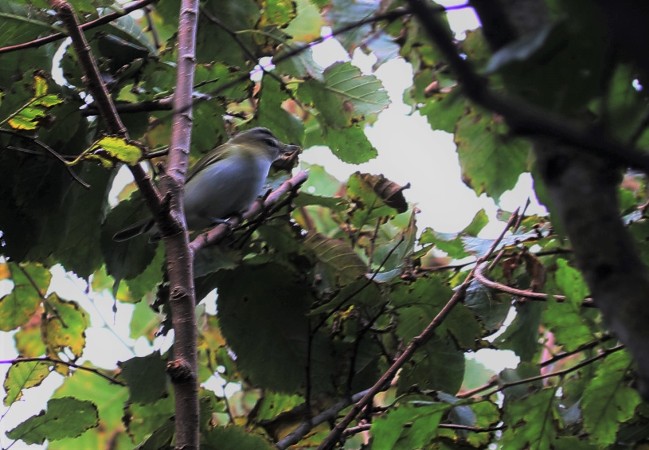
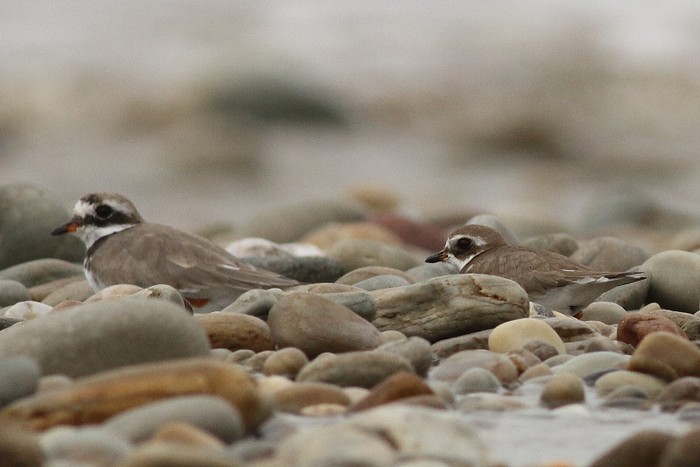
The remaining headline birds were all lingerers from previous weeks. These include the Semipalmated Plover still at Achill Island, Mayo to at least 14th, the Western Purple Swamphen still at Alkborough Flats, Lincolnshire to at least 17th and the Dalmatian Pelican still on the Camel Estuary, Cornwall to at least 18th. The Hudsonian Whimbrel at Perranuthnoe, Cornwall was, however, reported to 12th only. Has this long-term resident now departed? Certainly this week’s blast of cold Russian air would have provided it with an excellent excuse to head south.
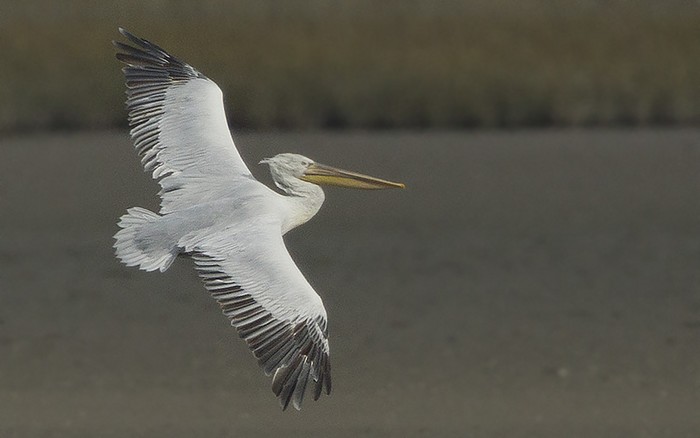
Even without Siberian Accentors, this was a busy week for ‘Euronews’. Other ultra-rare eastern passerines continued to arrive, most notably a Pallas’s Reed Bunting , an Azure Tit and two Asian Desert Warblers in Sweden, a Dusky Thrush in Norway and a Pine Bunting and an Isabelline Wheatear in Denmark. Also eastern in origin was a juvenile Red-necked Stint in Iceland, hot on the heels of the bird identified in Norway recently. From the opposite direction, a Short-billed Dowitcher was found in Norway. Finally, a Greater Spotted Eagle was in The Netherlands.
Photo of 1st-winter Pallas’s Bunting at Horssten, Sweden today pic.twitter.com/PGZG6gTPMK
— Tarsiger (@TarsigerTeam) October 13, 2016
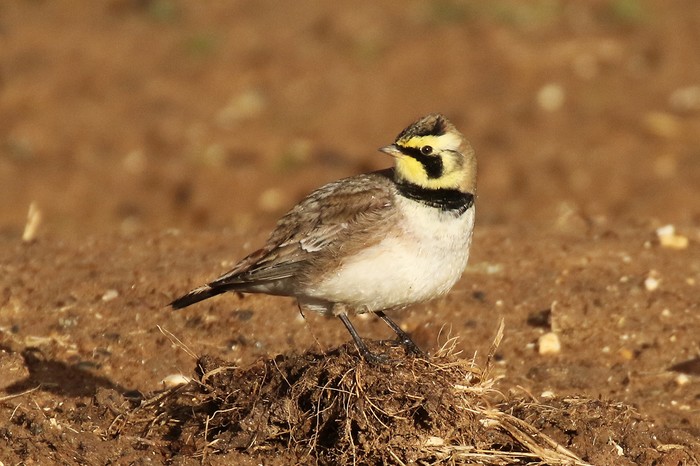
Sticking with passerines, this week saw a continuation of last week’s riches. Some of its star birds remained but there were plenty of new arrivals too. The turning of the year was obvious this week too, with a real shift in the species mix, notably the first real numbers of Fieldfares , a sudden influx of Shorelarks and a wide scatter of Mealy Redpolls .
Pied Wheatear, Scatness, Shetland from Shetland Wildlife.
Starting with the rarest birds, last week’s Pechora Pipit was still on Fair Isle, Shetland to at least 15th and another was found on Foula, also Shetland, on 14th. Rare wheatears (another sign of the advancing season) also made an appearance with a female Pied Wheatear at Scatness, Shetland on 14th to 17th and a male at Flamborough, Yorkshire on 14th and Desert Wheatears at Hartlepool, Cleveland on 14th, Bridlington, Yorkshire on 17th and Spiggie, Shetland on 18th.
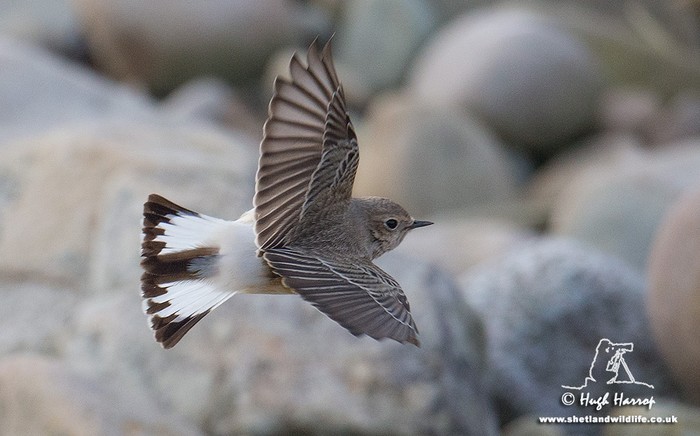
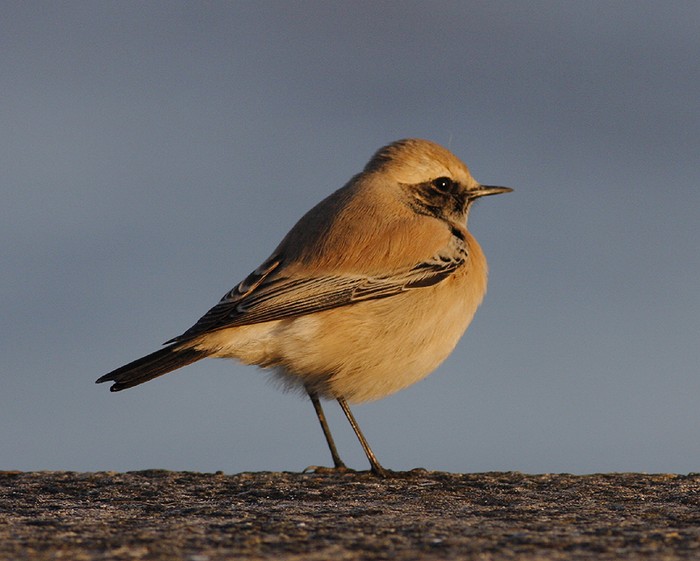
Some classic ‘winter irruptors’ made their first showing of the autumn this week too, the best being a pair of ‘Northern Long-tailed Tits’ in a stubble field at Sumburgh, Shetland on 14th with another on Bressay, also Shetland, the same day (though the latter sadly died) and then another three at Boddam, Aberdeenshire on 16th to 18th and four on Sanday, Orkney on 17th. Continuing the frosty theme were redpolls. Small numbers of Mealy Redpolls were recorded all down the east coast and there were some larger counts too, including 59 on Fair Isle, Shetland on 13th and 58 at Spurn, Yorkshire on 14th. These are good numbers for this early in the season so hopefully we can expect some more of these charming birds in coming days. A few Waxwings were also recorded, mainly in Shetland. Is an irruption of these on the way too?
Inevitably, the Mealies also brought a small number of Coues’s Arctic Redpolls , the first three found almost simultaneously on the afternoon of 12th - at Rimac and Donna Nook, both Lincolnshire, and Blakeney Point, Norfolk with another at Thornwick, Yorkshire on 14th. Other Arctic Redpolls on Fetlar on 12th to 13th and on North Ronaldsay, Orkney on 13th were either of this subspecies or hornemanni. A Hornemann’s Arctic Redpoll was on Unst, Shetland on 12th.
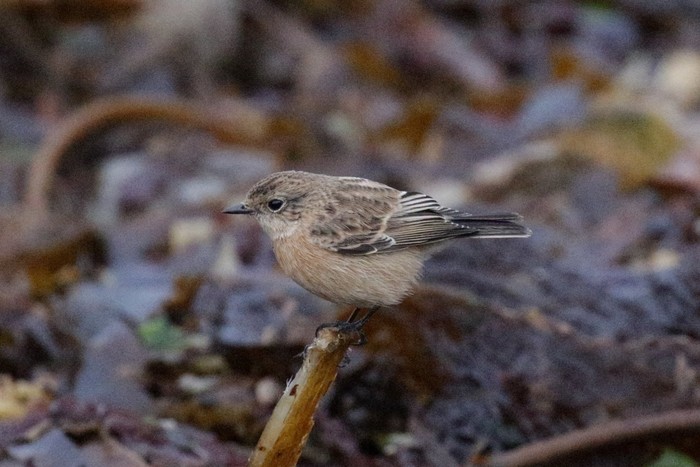
Other birds with pale rumps included no fewer than ten Siberian Stonechats – one still near Kinsale, Cork to 17th with new birds at Saltburn, Cleveland on 13th to 16th, St. Abbs, Borders on 14th, Donna Nook, Lincolnshire and Fair Isle, Shetland on 14th to 16th, Toab, Mainland Shetland on 15th, Blackhall Rocks, Durham on 16th, Grimston, Yorkshire on 16th to 17th, Fair Isle, Shetland on 16th to 18th and Sandwick, also Shetland, on 17th and 18th. Although the second Fair Isle bird and that at Sandwick were reported to resemble stejnegeri, many of the others appeared to be in the traditional ‘pale and peachy’ maurus mould – a reminder that maurus is overwhelmingly the most regular taxon to occur in Britain.
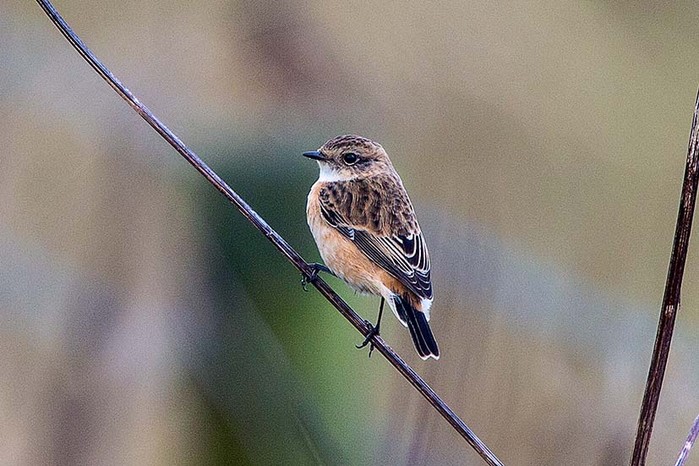
Red-flanked Bluetails were still in the news this week with ‘leftover’ birds still at Gibraltar Point, Lincolnshire to 14th, Donna Nook, also Lincolnshire to at least 16th and St. John’s Point, Down to 13th. New birds were at Holy Island, Northumberland on 12th, Fair Isle, Shetland on 12th to 13th, North Ronaldsay, Orkney and Flamborough Head, Yorkshire on 13th, Kergord, Shetland on 15th to 18th and Tarbat Ness, Highland on 16th. With this year’s total now on thirty-one, this is really now a scarce migrant.
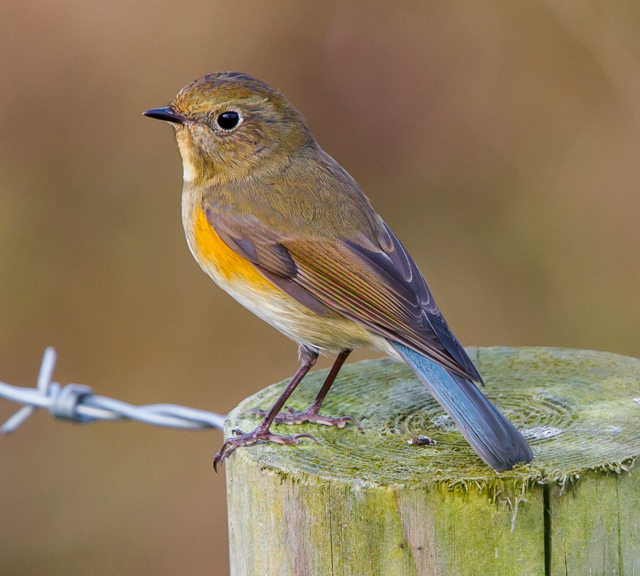
Olive-backed Pipits had a good week too with around sixteen noted. Birds were still at Wells, Norfolk to 17th (with two on 14th and 16th), Fair Isle, Shetland (two on 12th, three on 15th and two on 16th and 17th), Flamborough Head, Yorkshire to 15th, St. Abb’s Head, Borders on 13th, Isle of May, Fife on 13th to 15th, Kilnsea, Yorkshire and Scatness and Boddam, both Shetland, on 14th and Weisdale and Kergord, both also Shetland, on 15th, the latter to 18th. On 16th new birds were at Birsay, Mainland Orkney and Spurn, Yorkshire, the latter still there on 17th, on which date another was found at Hoswick, Shetland which was still present on 18th. Red-throated Pipits were still on Fair Isle to 14th and at Cape Cornwall on 15th.
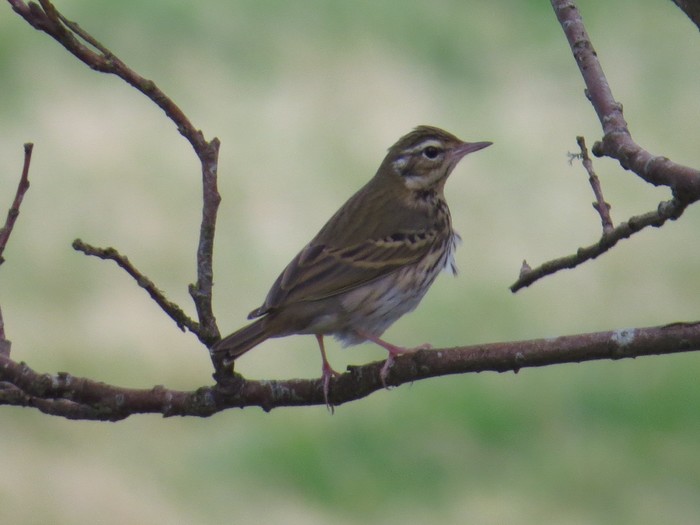
Turning to Phylloscopus warblers, an Iberian Chiffchaff at Sennen, Cornwall on 14th and Western Bonelli’s Warblers on Cape Clear, Cork on 15th to 18th and at Firkeel, also Cork on 18th were something of a departure from the eastern passerines script but, back on message, Arctic Warblers were on Unst, Shetland on 12th, on Barra, Western Isles on 13th and at Weisdale Voe and Kergord, both Shetland, on 14th. A Greenish Warbler on Cape Clear, Cork on 14th was late for this species.
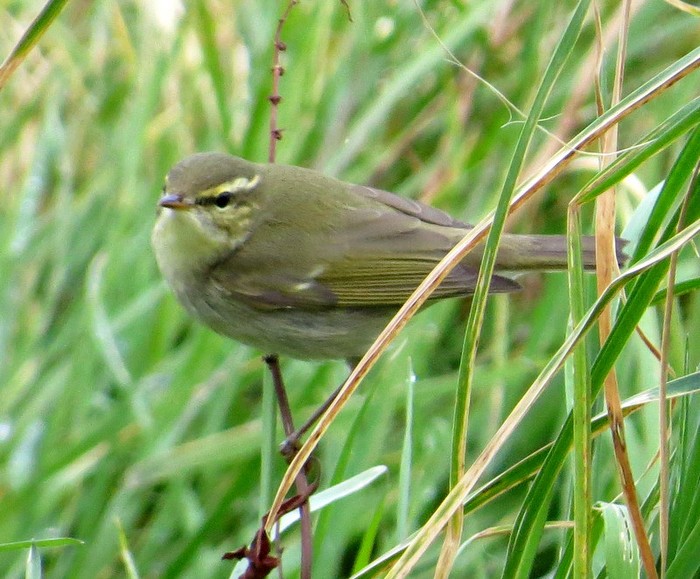
The week belonged to the traditional October duo of Radde’s Warbler and Dusky Warbler , however. The former totalled around twenty, with no fewer than twelve arriving on 15th. Most were on the east coast between Lothian and Norfolk but one was on Bardsey, Gwynedd on 13th and 14th and, even more unusually, several reached Ireland where one was at Brownstown Head, Waterford on 12th to 15th, another at Power Head, Cork on 15th and, remarkably, two near Kinsale, Cork the same day with both still present to 18th.
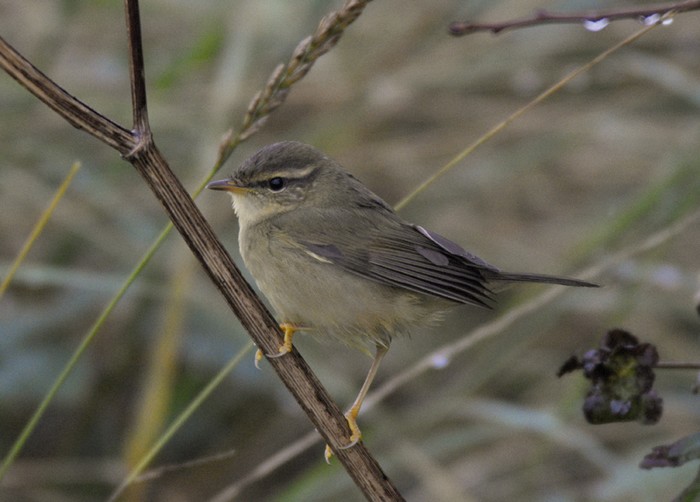
Dusky Warblers did even better, with around thirty-five noted, all on the east coast between Shetland and Suffolk apart from one at St. Agnes, Cornwall. Yorkshire led the field with an astonishing eight birds at Spurn and four at Flamborough on 15th. These two species used to be ‘neck and neck’ in terms of occurrences, each vying for the lead, but in recent years Dusky Warbler has been consistently commoner.
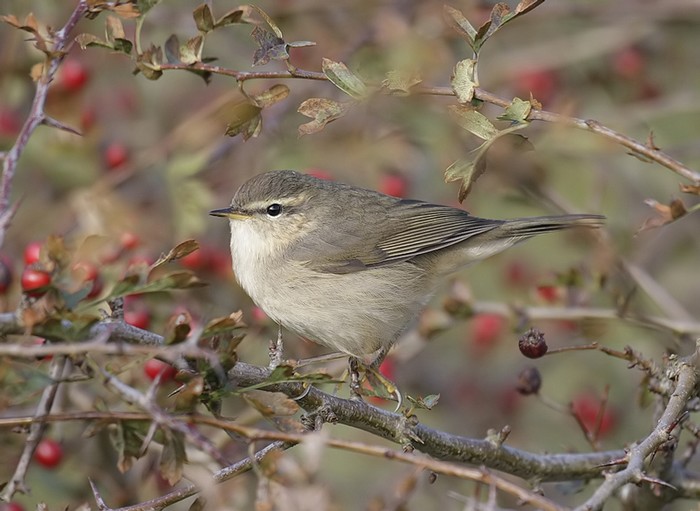
Pallas’s Warblers put on a good showing too although the numbers were not, by the standards of this species, remarkable. At least fifty were noted, almost all on the east coast between Shetland and Kent. Five got a little further west - to Dursey Island, Cork and St. Mary’s, Isles of Scilly on 13th and 18th, Penlee Point, Cornwall on 14th, St. Catherine’s Point, Isle of Wight on 15th and Holyhead, Anglesey on 16th. Yellow-browed Warblers were almost forgotten in the rush but were still present in good numbers, albeit not at the levels seen in recent weeks. Interestingly though, all the high counts were in the west, a reflection of significant onward passage through the country. Some impressive totals included five at Rhossili, Glamorgan, six on Barra, Western Isles, ten on Mizen Head, Cork, ten at Portland, Dorset and thirty on the Isles of Scilly.
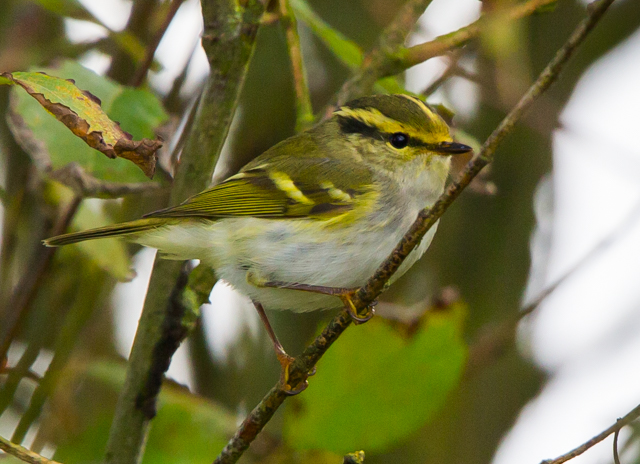
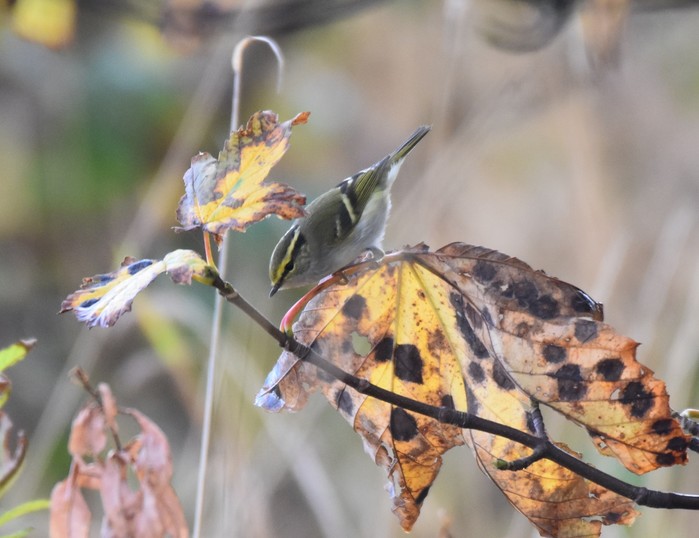
As for the other warblers, a Paddyfield Warbler at Flamborough Head, Yorkshire on 12th and 13th was the best but there was also a Booted Warbler at Seaford Head, Sussex on 12th and a Subalpine Warbler species was still on St. Mary’s, Isles of Scilly to 13th. Last week’s Blyth’s Reed Warbler was still on Whalsay, Shetland to at least 16th. Barred Warblers were at Burnham Overy, Norfolk on 13th to 16th, St. Mary’s, Isles of Scilly on 13th to 17th, Holy Island and Craster, both Northumberland, on 15th, St. Mary’s Island, also Northumberland, on 15th to 17th and Reighton, Yorkshire on 17th.
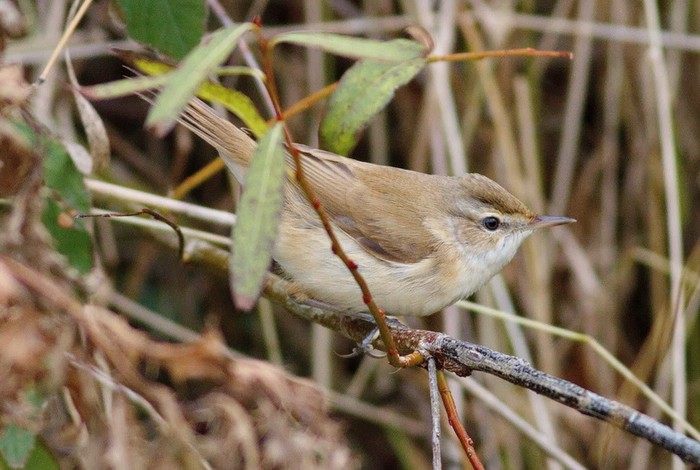
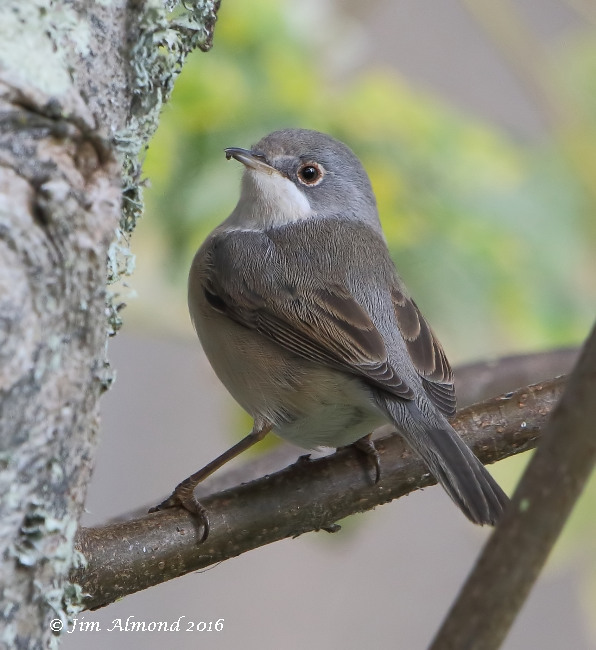
Eastern Lesser Whitethroats have been something of a feature of the last couple of weeks and while most will be blythi (a scarce migrant) a bird at Filey, Yorkshire on 17th looked rather different - a good halimodendri candidate with its dinky proportions, long-tailed appearance, apparently wholly white outer tail feathers and pale brown hues extending even beyond the nape onto the crown. Sadly, however, attempts to trap it were unsuccessful. A small number of ‘Central Asian Lesser Whitethroats’ have already been proven in Britain from DNA analysis but it would be good to contribute to the emerging picture with further evidence.
Little Buntings remained obvious but not at the record-breaking levels recorded last week. Around thirty were logged, mostly in Shetland (where up to four were on Fair Isle) and eastern England but around four were on the Isles of Scilly, singles were on Barra and South Uist, both Western Isles, and six reached Cork, Ireland – singles at Mizen Head and Galley Head and up to four on Cape Clear. This was an impressive showing nonetheless and, along with Dusky Warbler, this species will be remembered as one of the real features of October 2016.
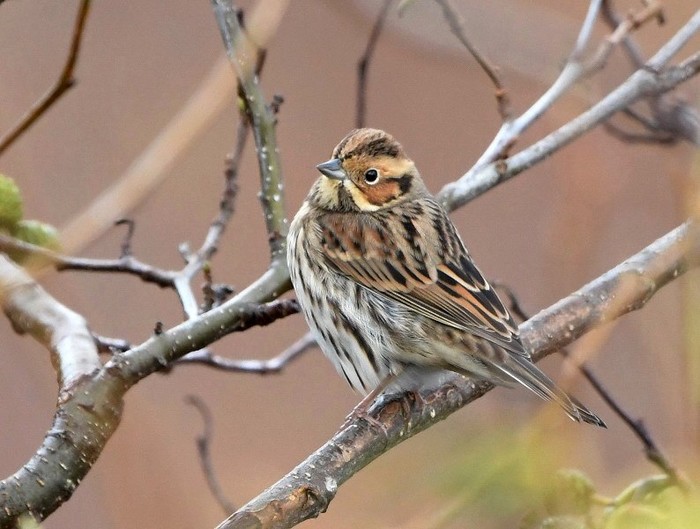
Richard’s Pipits totalled a disappointing fifteen or so at traditional eastern locations but one was at Galley Head, Cork on 12th and 15th, one at Rodley, Gloucestershire on 14th and 15th and another at Hilbre Island, Cheshire and Wirral on 17th. A single Tawny Pipit was reported – at Spurn, Yorkshire on 14th.
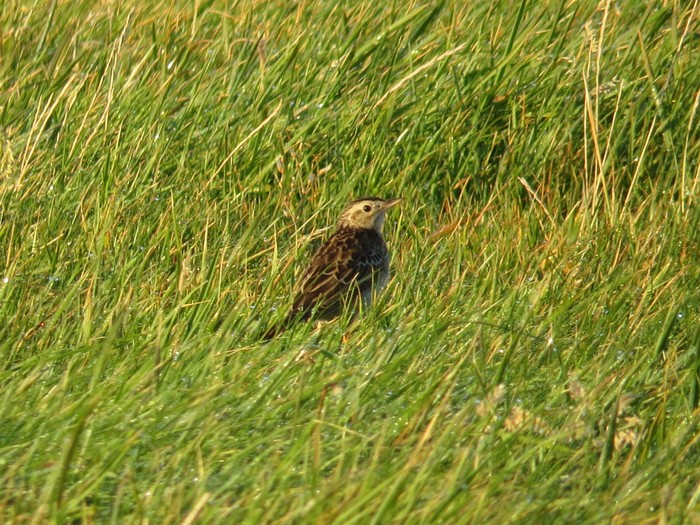
Rose-coloured Starlings were still near Scalloway, Shetland to at least 18th, Donna Nook, Lincolnshire to at least 15th and Weymouth, Dorset to at least 18th. New birds were on Unst and Out Skerries, both Shetland, and Spurn/Easington, Yorkshire on 13th and 14th and Cape Cornwall on 15th.
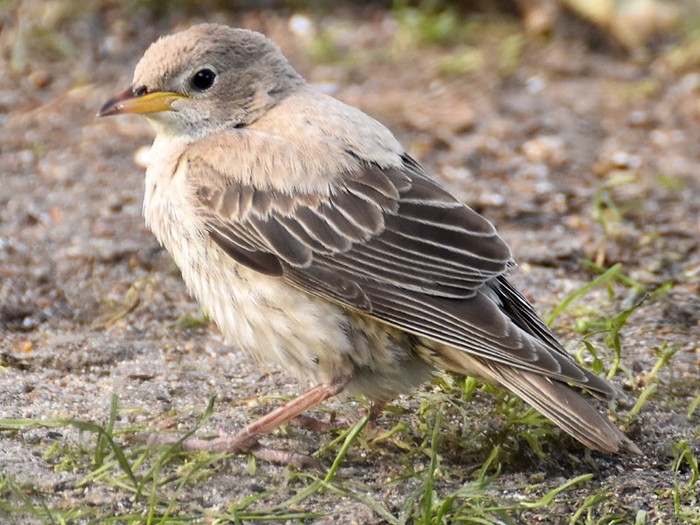
As for shrikes, Woodchat Shrikes were at Spurn, Yorkshire on 12th and 13th and at Mizen Head, Cork on 13th to 16th. The week’s only Red-backed Shrikes were at Westleton Heath, Suffolk to 18th and on Unst, Shetland on 12th to 15th. Around thirty Great Grey Shrikes were noted, most east coast migrants but ten or so penetrated further west - to Mull, Argyll, Coombe Hill, Gloucestershire, Fordingbridge, Hampshire, Morden Bog, Dorset, Ponterwyd, Ceredigion, Dartmoor, Devon, Ashdown Forest, Sussex and Frensham Common and Thursley Common (two), both Surrey.
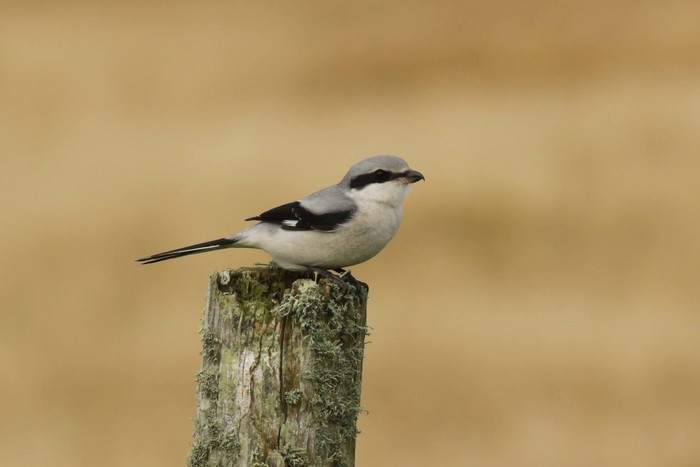
Red-breasted Flycatchers were fewer this week with around twenty-five noted. All were on the Northern Isles, the east coast or the Isles of Scilly apart from singles at Galley Head, Cork on 12th and Cape Clear, also Cork, on 15th.
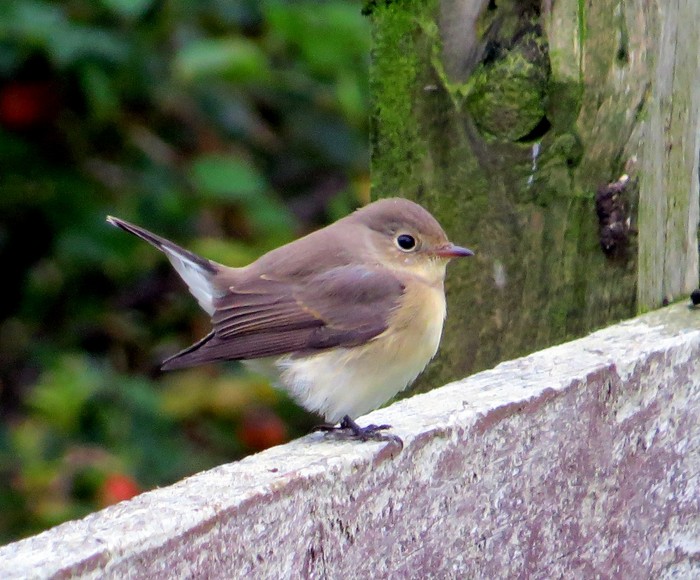
Rounding up the remaining scarce passerines, an Ortolan Bunting was still at Hillwell, Shetland to 13th and Short-toed Larks were on St. Mary’s, Isles of Scilly to 18th and at St. Agnes Head, Cornwall on 13th to 18th. Seven Wrynecks were discovered, all in southwest England apart from two in Pembrokeshire and one on Cape Clear, Cork. A Bluethroat was at North Roe, Shetland on 11th, Common Rosefinches at Tory Island, Donegal and Westray, Orkney on 12th, the Farne Islands, Northumberland on 15th and Nanjizal, Cornwall on 17th and Serins were at Durlston, Dorset and Leyton Flats, London on 12th, up to two on St. Mary’s, Isles of Scilly on 13th to 16th and one on Bryher, also Isles of Scilly (one of the same?) on 14th.
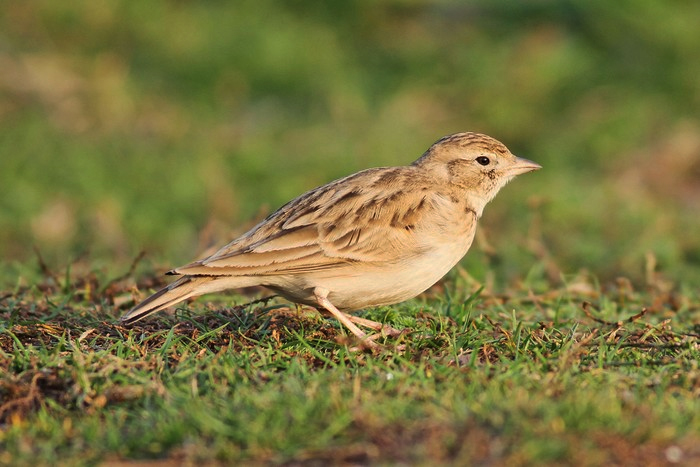
There were a surprising number of Hoopoes this week - at Halifax, West Yorkshire on 12th, Sanday, Orkney on 13th to 14th, Skokholm, Pembrokeshire on 14th to 17th, Foula, Shetland, North Ronaldsay, Orkney and Woodford, Gloucestershire on 14th to 18th, Walton on the Naze, Essex, St. Abbs, Borders and Rattray Head, Aberdeenshire on 15th and Ballysadare, Sligo on 17th. Finally, an Alpine Swift was at Berry Head, Devon on 17th - an unseasonal record but a testament to the sudden switch in the wind.
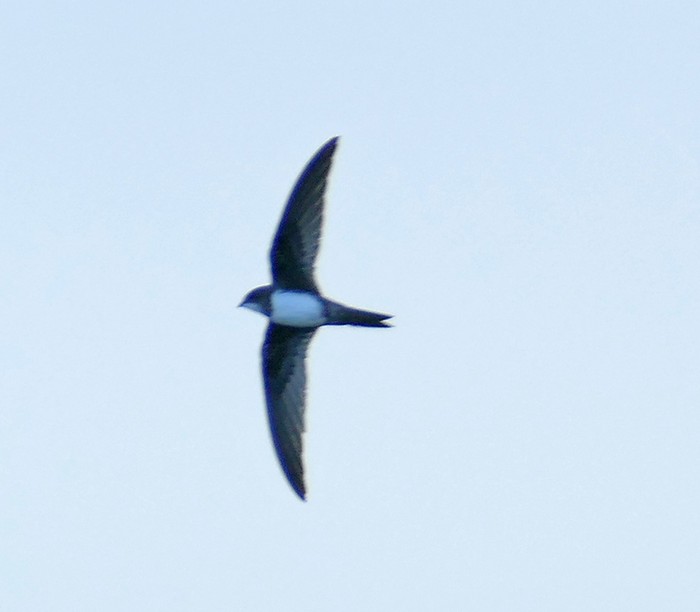
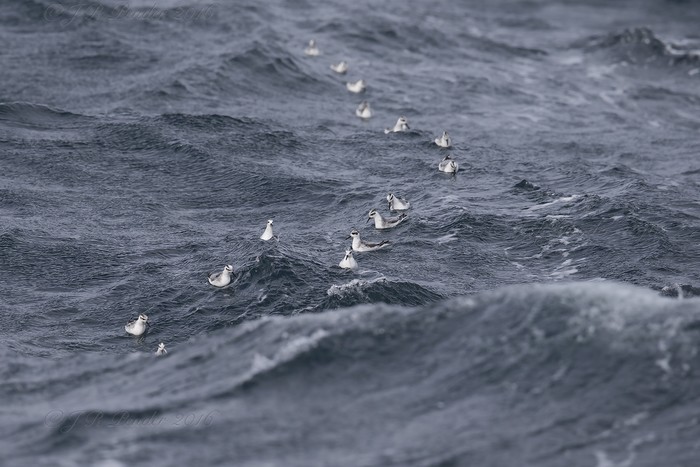
Seabirds were few and far between, the best concentration being eight Great Shearwaters and sixty Grey Phalaropes off a Scilly pelagic on 14th. Another Great Shearwater was at sea northwest of St. Ives on 16th and Sabine’s Gulls were off Strumble Head, Pembrokeshire on 17th and Pendeen, Cornwall and Ramore Head, Antrim on 18th. Otherwise the only notable seabirds were a handful of Long-tailed Skuas . In the North Sea there was a run of records off Whitburn, Durham (five on 13th and two on 14th and 15th) and singles off Deal, Kent on 12th, Canvey Island, Essex on 13th and Flamborough, Yorkshire on 14th. Over in the west, six passed Strumble Head, Pembrokeshire and one was off Ramore Head on 18th. Back in the North Sea, a Balearic Shearwater was off Sheringham, Norfolk on 13th whilst Little Auks off Chanonry Point, Highland on 16th and Burghead, Moray and Mainland Orkney on 17th were signs of impending winter.
Several Black Brants were back for the winter this week with birds noted at Cley, Norfolk from 12th, Spurn, Yorkshire and Walton on the Naze, Essex from 15th and Holkham, Norfolk on 18th. The only other rare geese were a Snow Goose at Bownesss-on-Solway, Cumbria on 17th and 18th and a Richardson’s Cackling Goose on Islay, Argyll on 18th. The week also saw widespread reports of Bean Geese and White-fronted Geese in eastern England.
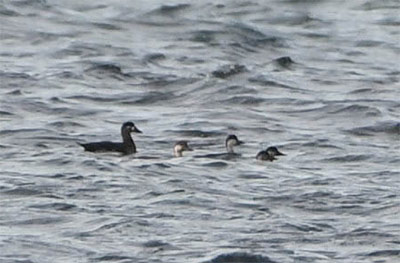
As for ducks, a Blue-winged Teal at Leighton Moss, Lancashire was the highlight. Otherwise, Green-winged Teal were at Caerlaverock, Dumfries and Galloway on 15th and Loch of Kinnordy, Angus on 18th, an American Wigeon at Hesketh Out Marsh, Lancashire on 15th and a Ring-necked Duck at Chew Valley Lake, Somerset on 15th to 17th. A drake Surf Scoter was found at Rhos Point, Conwy on 16th, as were further American Wigeons at Loch of Strathbeg, Aberdeenshire on 16th, Leighton Moss, Lancashire on 16th to 18th and Westray, Orkney and Covenham Reservoir, Lincolnshire on 18th and a female Ferruginous Duck was also found at Chew Valley Lake on 17th.
As for long-stayers, the American Wigeon was still at Kirkwall, Orkney on 16th, the drake Surf Scoter still at Musselburgh, Lothian to at least 16th, with the juvenile on South Uist, Western Isles there to 18th, and the drake Black Duck still at Strontian, Highland to at least 16th.
Great White Egrets reached eighteen at Blagdon and at least fifteen at Chew Valley Lake, both Somerset, with ten as far north as Leighton Moss, Lancashire.
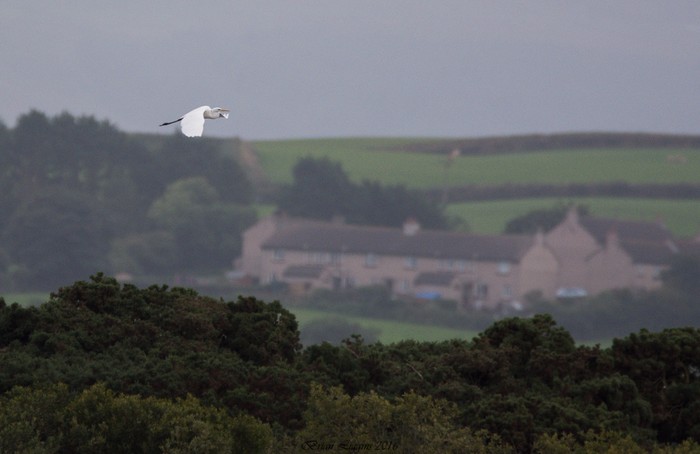
Cattle Egret reports were widespread, the increasing numbers and the Southwest bias to the records both suggesting continued immigration. Birds were on St. Mary’s and Tresco (two), both Isles of Scilly, and at Pendeen, the Camel Estuary, The Lizard, Dinham Flats, Porthgwarra (two) and Sennen (two), all Cornwall. Elsewhere, birds were at Carrigaline, Cork (five), Topsham, Devon, Steart, Somerset, Newport Wetlands, Gwent, Slimbridge, Gloucestershire, Blithfield Reservoir, Staffordshire (four), Saltney, Flintshire, Burton Mere, Cheshire and Wirral (two), the Nene Washes, Cambridgeshire and Blakeney, Norfolk, with three still at Marshside, Lancashire.
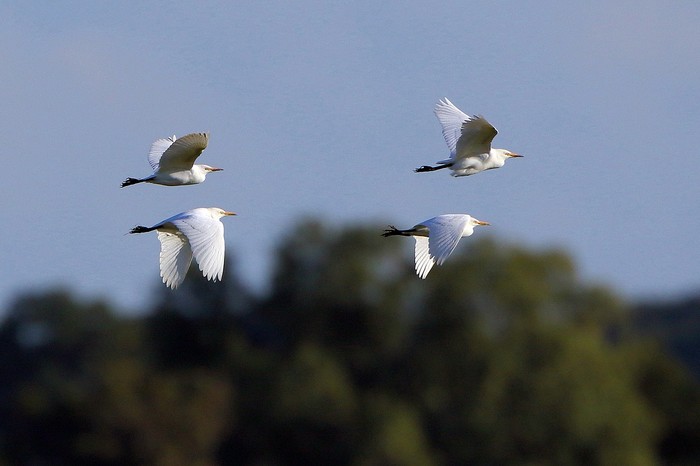
Previously present Glossy Ibises were at Pitsea, Essex, Cossington Meadows, Leicestershire, Horsey Island and Yelland Quay, Devon and Ham Wall, Somerset (two) with new or wandering birds at Killough, Down on 14th and 15th, Rowlands Gill, Durham on 16th and Kilnsea, Yorkshire (the same bird?) on 17th. The lower numbers this week certainly imply a southwards exodus. Also doubtless heading south are Spoonbills though up to forty could still be counted around Poole Harbour, Dorset.
Finally, a Spotted Crake was at Chew Valley Lake, Somerset on 12th to 17th with two on Fair Isle, Shetland on 13th and another at Newport Wetland Centre, Gwent on 16th. A Corncrake was on Scolt Head Island, Norfolk on 13th.
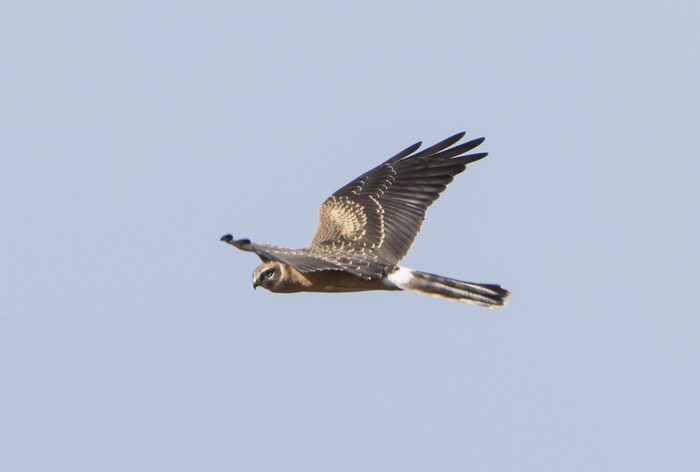
Juvenile Pallid Harriers at Boddam, Mainland Shetland on 12th and 13th, Potteric Carr, Yorkshire on 14th and Greylake RSPB, Somerset on 16th to 18th were the rarest raptors of the week. Despite last week’s hints and the continued feed of cold air from the continent there was no influx of Rough-legged Buzzards . Just two were reported - at Langdon Cliffs, Kent on 12th and Flamborough Head, Yorkshire on 16th. A Honey-buzzard was over Ballycotton, Cork on 18th.
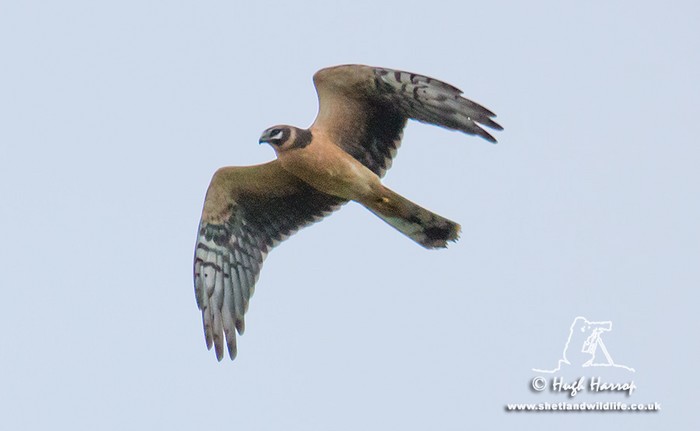
Pallid Harrier, Hillwell, Shetland from Shetland Wildlife.
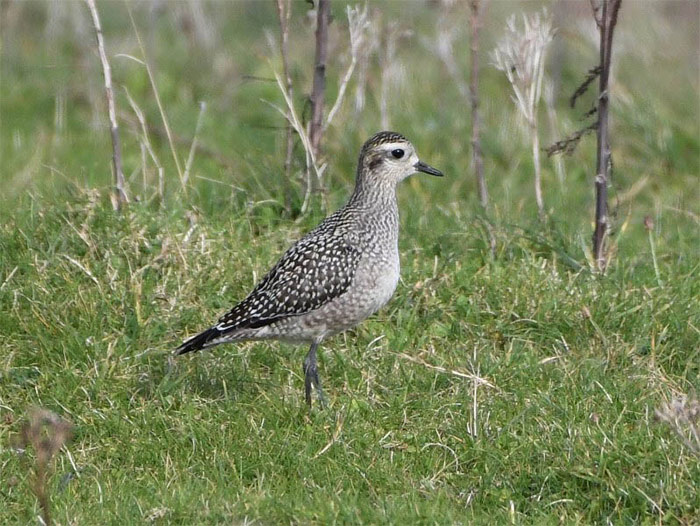
It was relatively quiet for American waders too, with many birds being lingerers from September. Long-billed Dowitchers were at Faversham, Kent to at least 18th and Frampton Marsh, Lincolnshire to at least 17th whilst the Lesser Yellowlegs was still at Poole Harbour, Dorset to at least 18th with another at Shannon Harbour, Offaly on 17th. There were also three Baird’s Sandpipers - at Low Newton-by-the-Sea, Northumberland still to 17th, on Achill Island, Mayo on 14th and at Kenfig, Glamorgan on 13th and 14th. The remarkable five Semipalmated Sandpipers were again at Tacumshin, Wexford on 14th (with one still on 15th) and others were at Inch Island, Donegal on 14th and 15th and Carrahane Strand, Kerry and Quilty, Clare on 15th. American Golden Plovers were slightly more in evidence with reports from South Uist, Western Isles, Ballycotton, Cork (two), Loop Head, Clare and The Cashen, Kerry.
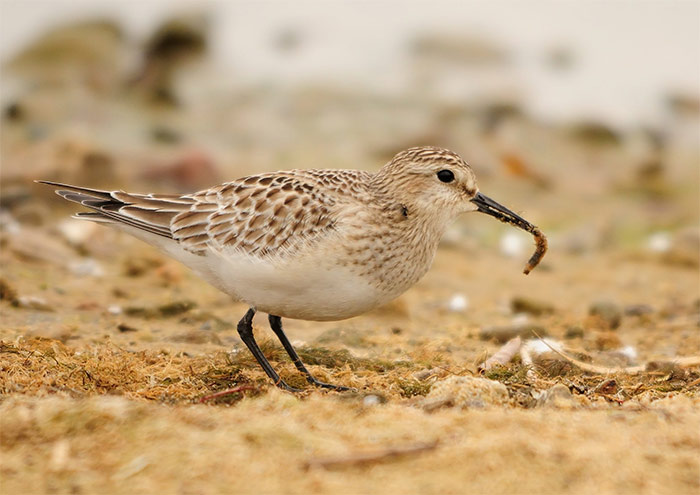
Eight Pectoral Sandpipers were noted, five in England (Cambridgeshire, Gloucestershire, Somerset, Cornwall and Cheshire and Wirral), two in Scotland (Aberdeenshire and the Western Isles) and one in Wales (Camarthenshire). The week’s only Buff-breasted Sandpiper was the long-stayer at Boddam, Mainland Shetland to 16th.
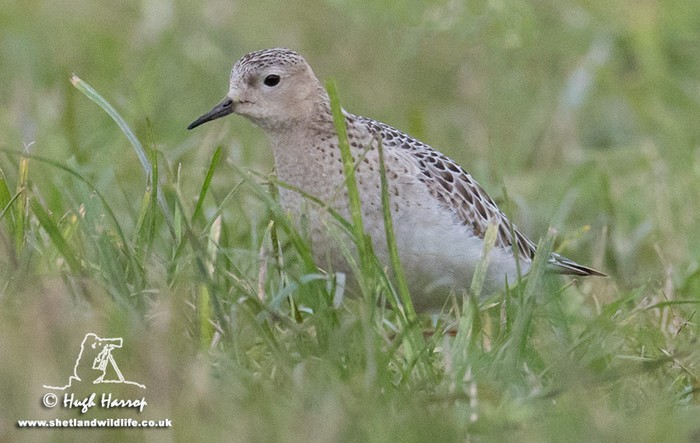
As for Palearctic waders, Dotterels were at Spurn and Filey, both Yorkshire, and Zennor, Cornwall on 12th and on Bryher, Isles of Scilly (two) on 12th to 13th. Two more were reported at Choseley, Norfolk on 15th.
The best rare gull of the week was Kent’s first ever Franklin’s Gull - a first-winter - at Grove Ferry on 17th. An adult Bonaparte’s Gull was at Quilty, Clare on 13th to 16th and Ring-billed Gulls at Enniskillen, Fermanagh on 12th, Cruisetown Strand, Louth and Nimmo’s Pier, Galway on 14th, Carrickfergus, Antrim on 15th and Carrigaline, Cork on 17th. The only white-winged gulls were Glaucous Gulls at Spey Bay, Moray on 13th to 15th and Lossiemouth, also Moray on 17th, North Ronaldsay, Orkney on 14th and Walney, Cumbria on 16th and an Iceland Gull at Durlston, Dorset on 16th.
The only rare terns of the week were a Caspian Tern at St. Margaret’s at Cliffe, Kent on 16th - a remarkable record for mid-October - and a juvenile White-winged Black Tern at Portmore Lough, Antrim on 15th.
Looking ahead, the spell of westerlies currently ‘enjoyed’ by most of us looks set to be temporary. Northwesterlies at the beginning of the new roundup week are predicted to swing into the northeast behind an area of low pressure over the near-continent. Beyond that, things look a little unclear but the general bird implications are clear enough. Any ‘window’ to the continent should bring further arrivals of winter immigrants, some more Siberian rarities and more irruptors such as redpolls, Waxwings and perhaps some more ‘Northern Long-tailed Tits’. Of course what everyone will be searching for is the next Siberian Accentor……
Andy Stoddart
19 October 2016










